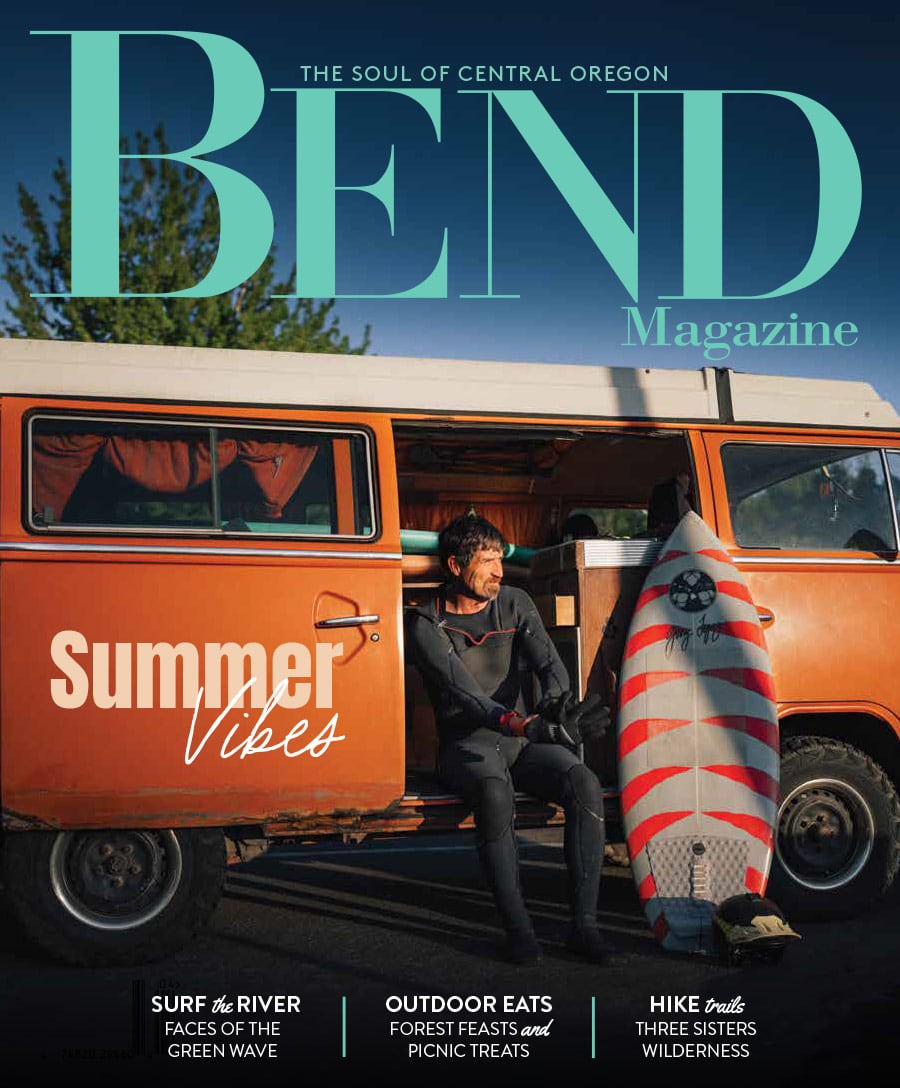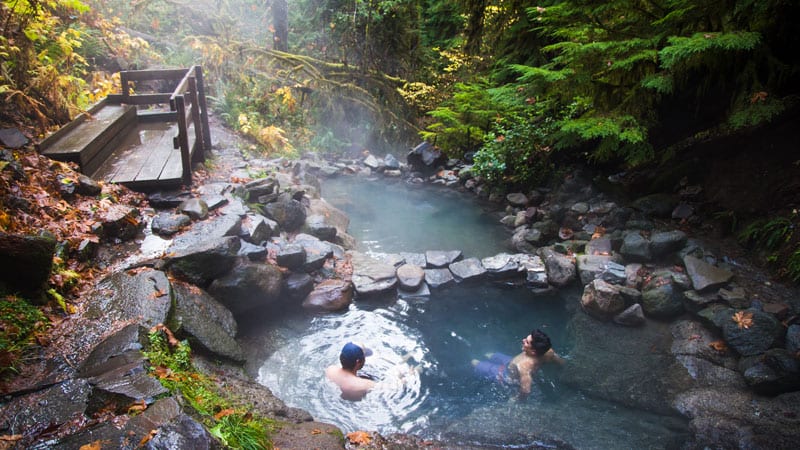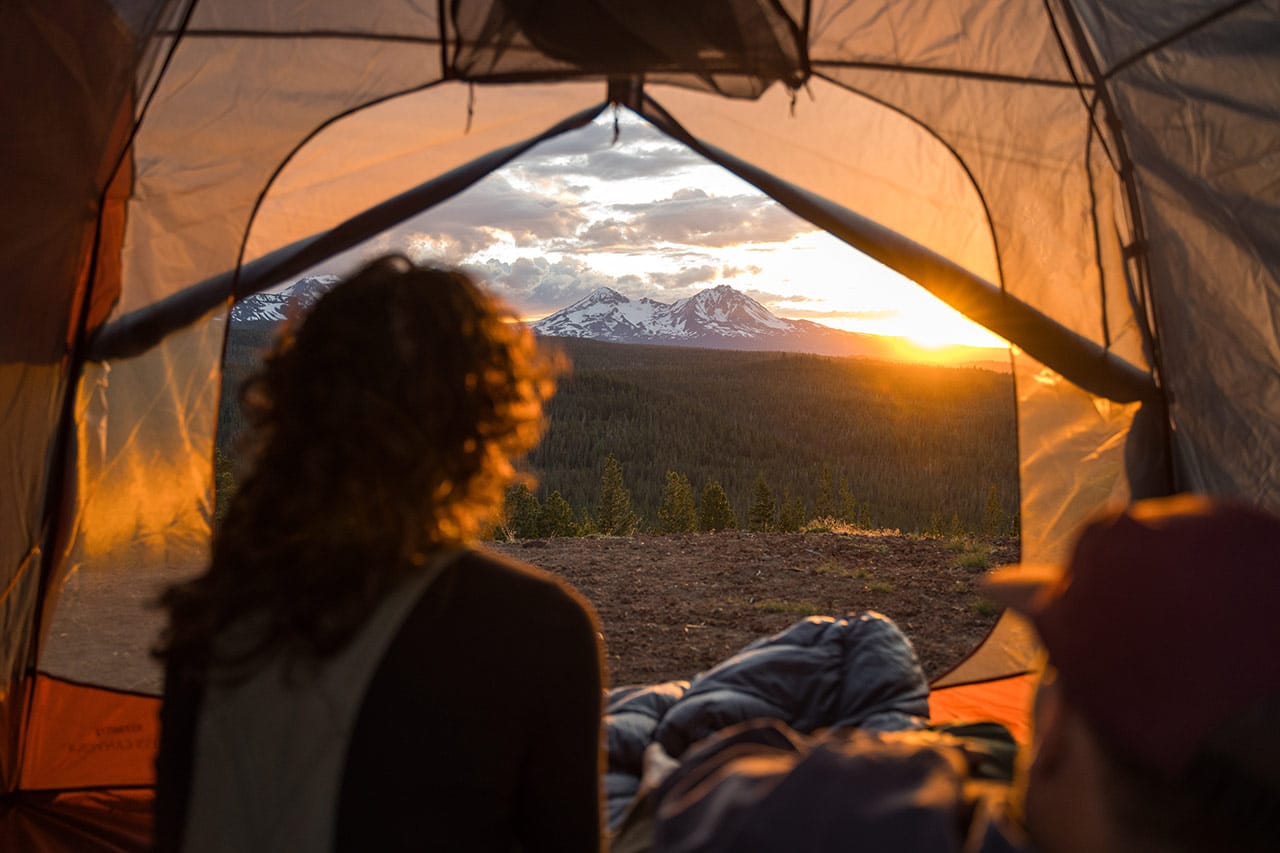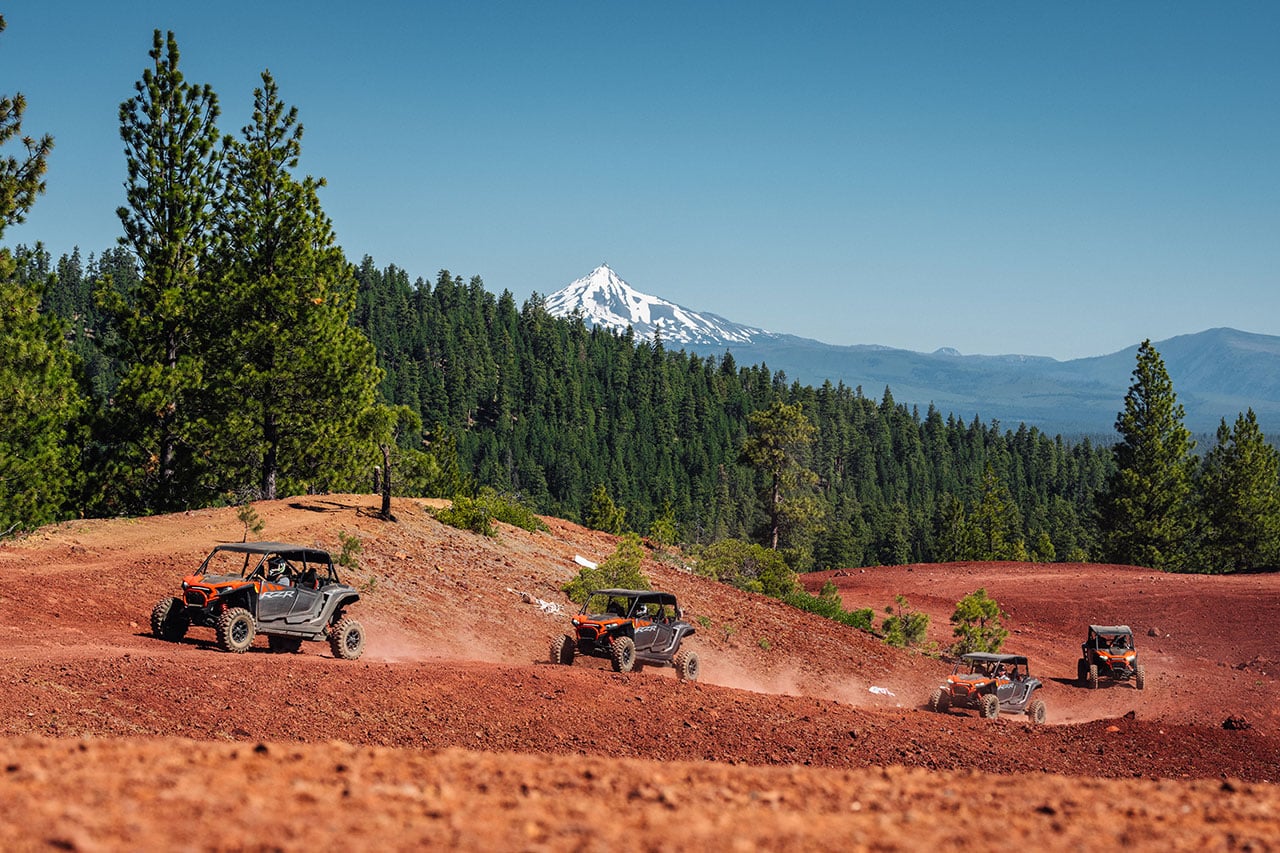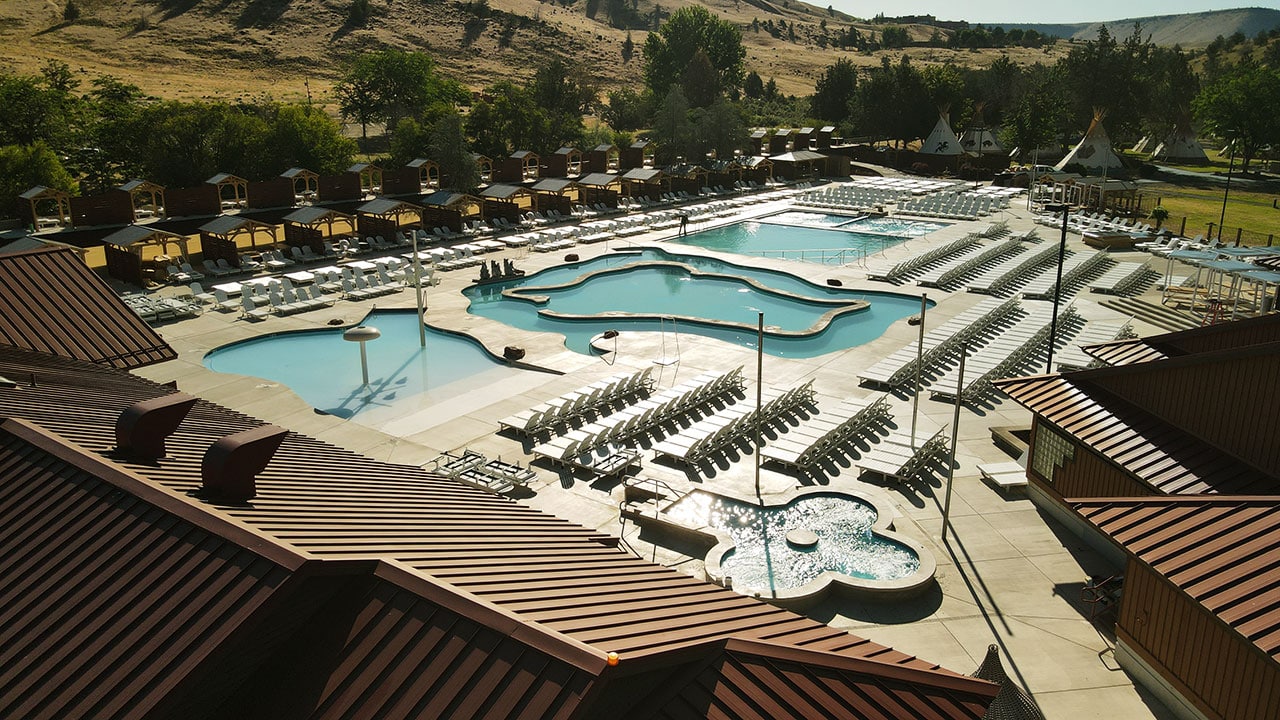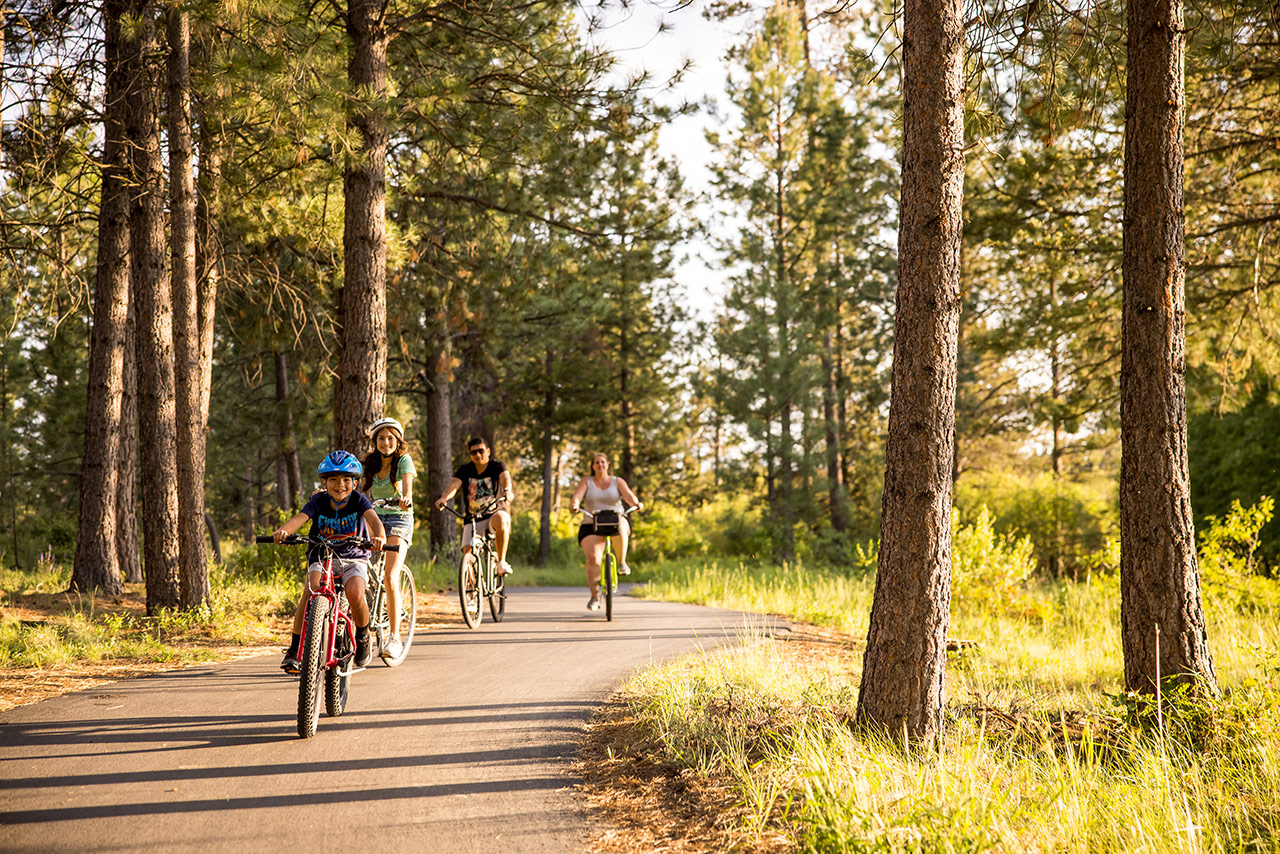In Oregon, no two hot springs are truly alike. Some sit surrounded by old-growth forests, like something from a fairytale, while others are the cornerstones of rural resorts in the far reaches of the state. Millions of years of geothermal activity under our state’s surface made our beloved hot springs possible, and those steaming pools are today a destination for visitors looking to rest and refresh. With winter on the way, here are four of our favorite hot spring adventures for stripping down and warming up within a morning’s drive of Bend.
Terwilliger (Cougar) Hot Springs
Perhaps the most popular hot springs in all of Oregon, Terwilliger Hot Springs sits just shy of two hours west of Bend in the heart of the Cascade Range nestled in a secluded canyon of Willamette National Forest. A quick, quarter-mile-long trail cuts through an old-growth forest before arriving at the magical site. Six pools are arranged in a step ladder-like fashion, with temperatures ranging from 85°F in the lowest pool to 112°F in the topmost pool. The temperature variance and the number of pools make Terwilliger a popular stop for groups of all sizes.

Also known as Cougar Hot Springs, the pools at Terwilliger are a cascade of geothermal pools where time slows and relaxation is key. The natural pools are just a short stroll from the trailhead and are regularly maintained by volunteers. The top pool is the warmest, and the others gradually cool. Bring a towel and bathing suit (or go au naturel). After a soak, explore the surrounding Willamette Valley’s hiking trails, waterfalls and trails. Note: Nudity is not permitted within eyesight of nearby Forest Road 19 (Aufderheide Drive). The pools are only open from sunrise to sunset, and are closed 8 a.m. to noon on Thursdays for cleaning. Forest Road 19 is not maintained in winter and may be covered in snow and ice after inclement weather.
If You Go: Forest Road 19, Rainbow | 541-822-3381 | fs.usda.gov
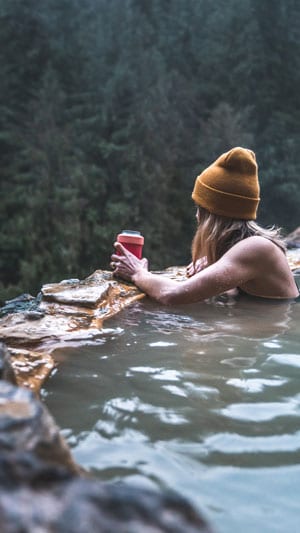
Umpqua Hot Springs
Oregon’s most Instagrammed hot springs? That title likely goes to Umpqua Hot Springs, perched 150 feet above the North Umpqua River roughly two hours southwest of Bend. Soakers must endure a steep 0.3-mile-long hike before arriving at the popular pools, which jut out from a rock face and are supplied with water that ranges from 100ºF to 115ºF. If you are not bothered by nudity, these pools along the North Umpqua River are the place to soak. A short quarter-mile hike from the trailhead through dense forest leads to several geothermal pools nestled on a cliffside above the river. Unlike many springs short of space, the Umpqua hot springs have multiple pools that allow visitors some privacy and a range of soaking temperatures. Relax in a pool under a small shelter at the top or make your way down the cliffside. You can claim one of two smaller pools halfway down the cliff or climb all the way down to the river where a medium-size pool beneath bat caves awaits. If you get too hot soaking in this pool, cool off in this shallow stretch of the river or cross to the other side to reach natural springs and cascading falls. On the way back to the main highway, stop off at Toketee Falls, an 113-foot falls that plunges into a deep blue pool.
The springs are open sunrise to sunset daily. The gate to Umpqua Hot Springs is frequently closed in winter which may add an additional 1.5 miles of hiking in each direction; the U.S. Forest Service can offer updates on whether the gate is open or closed at any given time.
If You Go: Driving time from Bend: 2 hours 15 minutes | Forest Road 3401, Roseburg | 541-498-2531 | fs.usda.gov
Belknap Hot Springs
The soothing pools at Belknap Hot Springs aren’t technically hot springs; rather, they’re spring-fed pools of hot mineral water. But the healing atmosphere and relaxed nature of the pools nevertheless offer an escape from the modern world without sacrificing modern amenities.
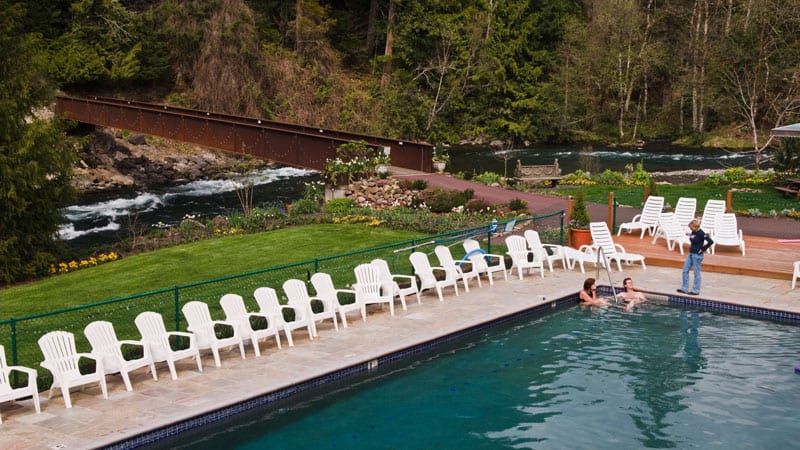
Belknap sits along the McKenzie River and hosts two pools—one reserved for overnight guests, the other open to walk-in visitors. (Bathing suits are required in both pools.) Beyond the pools, Belknap offers well-manicured gardens and overnight accommodations including lodge rooms, cabins, RV sites, and tent sites, all just one-and-a-half hours west of Bend.
If You Go: 59296 N. Belknap Hot Springs Road, McKenzie Bridge | 541-822-3512 | belknaphotsprings.com
Southeastern Oregon Hot Springs
A trio of developed hot springs sit in southeastern Oregon. The first, two-and-a-half hours southeast of Bend, is Crane Hot Springs. The resort hosts ten cabins, a few houses, and tent and RV sites for rent in the sagebrush sea of Oregon’s high desert. There, guests can soak in a cedar-enclosed bathhouse (fed with a natural hot water tap that accommodates desired temperature) and in a seven-foot-deep, open-air pond that runs roughly 101ºF. The newest building boasts a private patio with private soaking tub. Day-use is not permitted; guests must stay at least two nights to use the resorts’ facilities.
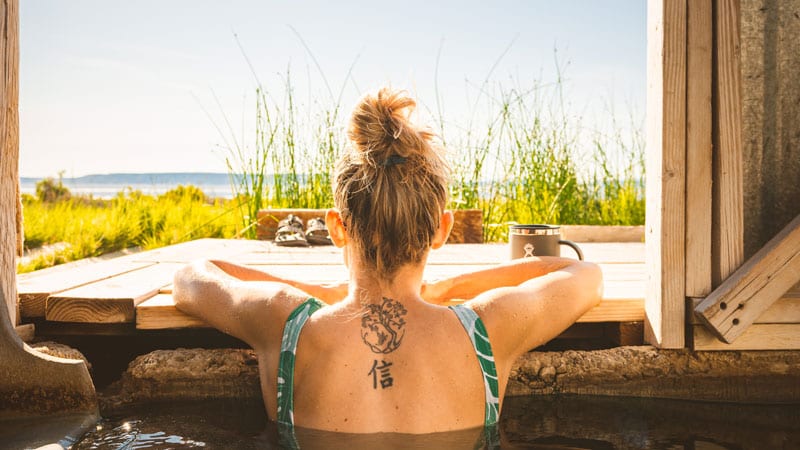
If You Go: Crane Hot Springs: 59315 Highway 78, Burns | 541-493-2312 | cranehotsprings.com.
Farther south sits Alvord Hot Springs at the edge of the Alvord Desert. The privately owned outfit hosts two concrete pools fed by water that comes out of the ground at 170ºF—and which is, naturally, cooled when mixed into the soaking pools. The experience is soothing at all times but is especially majestic under the starry night skies endemic to the region. Alvord Hot Springs hosts several bunkhouses and campsites; overnight guests can use the hot springs 24 hours per day, while day-use soakers are welcome during normal business hours.
If You Go: Alvord Hot Springs: Fields-Denio Road, Princeton | 541-589-2282, alvordhotsprings.com
Just two hours south of Bend is Summer Lake Hot Springs, with a collection of classic and new cabins, camping and RV sites for soakers. Three outdoor pools are at varying temperatures; the indoor pool is just right for family swims.
If You Go: Summer Lake Hot Springs: Highway 31, Paisley | 541-943-3931 | summerlakehotsprings.com
Know Before You Go
Soaking demands a bit more planning than “which bathing suit to pack.” Keep these tips in mind for a safe, enjoyable soaking experience.
Check road and trail conditions: Many hot springs are in remote areas where snow and ice can close roads all winter long, and downed trees can impede travel in fall and spring. Visit tripcheck.com for information on road conditions, and check with the appropriate land manager (such as the U.S. Forest Service) on the status of trails to hot springs on undeveloped land.
Leave the soap at home: Soap doesn’t break down on its own and can pollute water systems—even biodegradable soap.
Go easy on the booze: By their very nature, hot springs dehydrate the body—which only exacerbates the impacts of alcohol. To stay safe and healthy, save that IPA for after your soak. Besides, alcohol isn’t actually allowed at undeveloped sites. (And leave the glass bottles back in the car.)
Pack out what you pack in: Many of Oregon’s hot springs are in undeveloped, forested areas. Help preserve the natural beauty by packing out whatever you pack in, trash and all.
Time your trip well: Friday evenings and Saturday afternoons are among the busiest times at hot springs—and may lead to longer wait times or a wilder scene. If possible, try for an off-peak time—like weekday afternoons or midweek evenings—for a quieter experience.
Read more about Oregon Hot Springs here.


